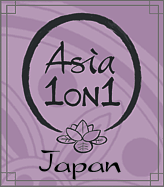|
|
|

Accommodation
| |
Introduction:
Travelers to Japan will be pleasantly surprised by the variety of accommodations available to them, not just in terms of the usual location, price, amenities and frequent guest plans but in terms of unique accommodation experiences. In addition to normal hotels there are three other types of Japanese-style accommodations that tourists should try to experience. These include ryokans, or fine Japanese-style inns, minshukus, or Japanese-style bed-and breakfasts, and shukubos, or temple stays. There are also the usual youth hostels and YMCA/YWCAs plus another unique Japanese invention, the capsule hotel.
|
|
|
|
|
| |
Hotels:
Japan has a full range of hotels available for international visitors. These include high-end “international” hotels such as the Four Seasons and the Grand Hyatts (if you saw the recent movie, “Lost in Translation”, it was set at the Park Hyatt in Tokyo), down to the unique, modestly priced “capsule” hotels meant for businessmen who were out partying too late and missed the last train home at night. There are also several major Japanese owned and managed chains that have remained concentrated in Japan so they are not well know outside Japan. These include Prince Hotels (over 60 hotels in Japan; 9 hotels outside Japan), Tokyu Hotels (58 hotels), Hankyu-Daiichi Hotels (42 hotels), Granvia Hotels (8 hotels; owned by the Japan Rail West company and usually conveniently located in or next to railway stations), and Rihga Royal Hotels (11 hotels). A few Japanese chains have expanded beyond Japan and are better known to experienced travelers. This includes the Nikko (32 hotels in Japan; 19 hotels outside Japan) and ANA (33 hotels in Japan; 2 hotels outside Japan) hotel chains, both being associated with Japan’s two major airlines, Japan Air Lines (JAL) and All Nippon Airways (ANA) respectively. There are also other smaller Japanese chains associated with department store chains and local railways (do you start to see a pattern emerging here?) Several of the best Japanese owned and managed hotels are part of smaller hotel companies that have only one or just a few properties, e.g. the Okura, the New Otani and the Imperial hotels (the latter famous for originally being designed by Frank Lloyd Wright.)
|
|
|
|
|
| |
One of the things that strikes visitors from North America the most is that everything in Japan seems to be about 2/3s or 3/4s scale. This carries over into hotel rooms as well. The majority of Japanese hotels, other than the international chains and other deluxe hotels tend to have smaller rooms than Westerners are used to. If you are budget conscious and book a hotel accordingly, you may be surprised to find you are in a pretty tight room with a smaller bed and with doorways that may force you to duck in order to pass. As long as you aren’t much taller than 6 feet you shouldn’t have too much of a problem, but just be aware of this “cultural difference” and learn to enjoy it.
|
|
|
|
|
| |
Another “cultural difference” you may notice is that Japanese men smoke a lot, including in their hotel rooms. It can be difficult to get a true “non-smoking” room as you might find elsewhere. Normally the housekeeping staff have equipment that removes most of the smoke smell from rooms, but if you are very sensitive to smoke, you could have a problem. The exception to this is, again, the international hotels where non-smoking rooms are part of what they offer to their international clientele.
|
|
|
|
|
| |
A final “cultural difference” that can impact you is that since normally Japanese wives do not travel with their husbands, there are lots of single rooms with small, twin-size beds meant for one person. The next most common room layout is a twin room, i.e. one with two small (by Western standards) twin beds. Getting a single queen or king size bed can be difficult in typical Japanese hotels. You will find that our notion of four standard bed sizes, twin, double, queen and king, doesn’t apply in Japan (again, other than in most international hotels.) There are more Japanese bed sizes than you can shake a bed bug at. Feel free to ask for a particular Western size, but please don’t make a fetish out of it. You’re there to see the country, not the beds.
|
|
|
|
|
|
|
|
|

